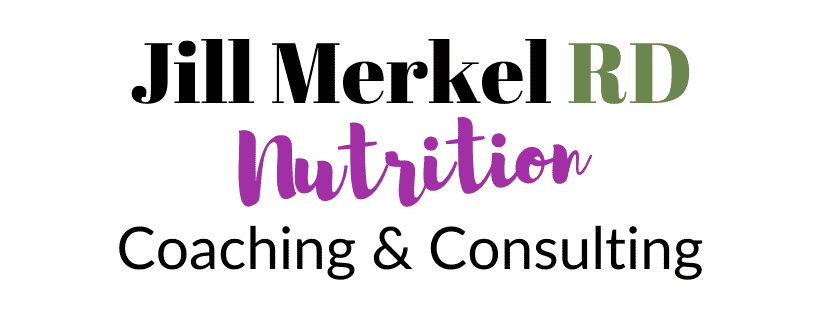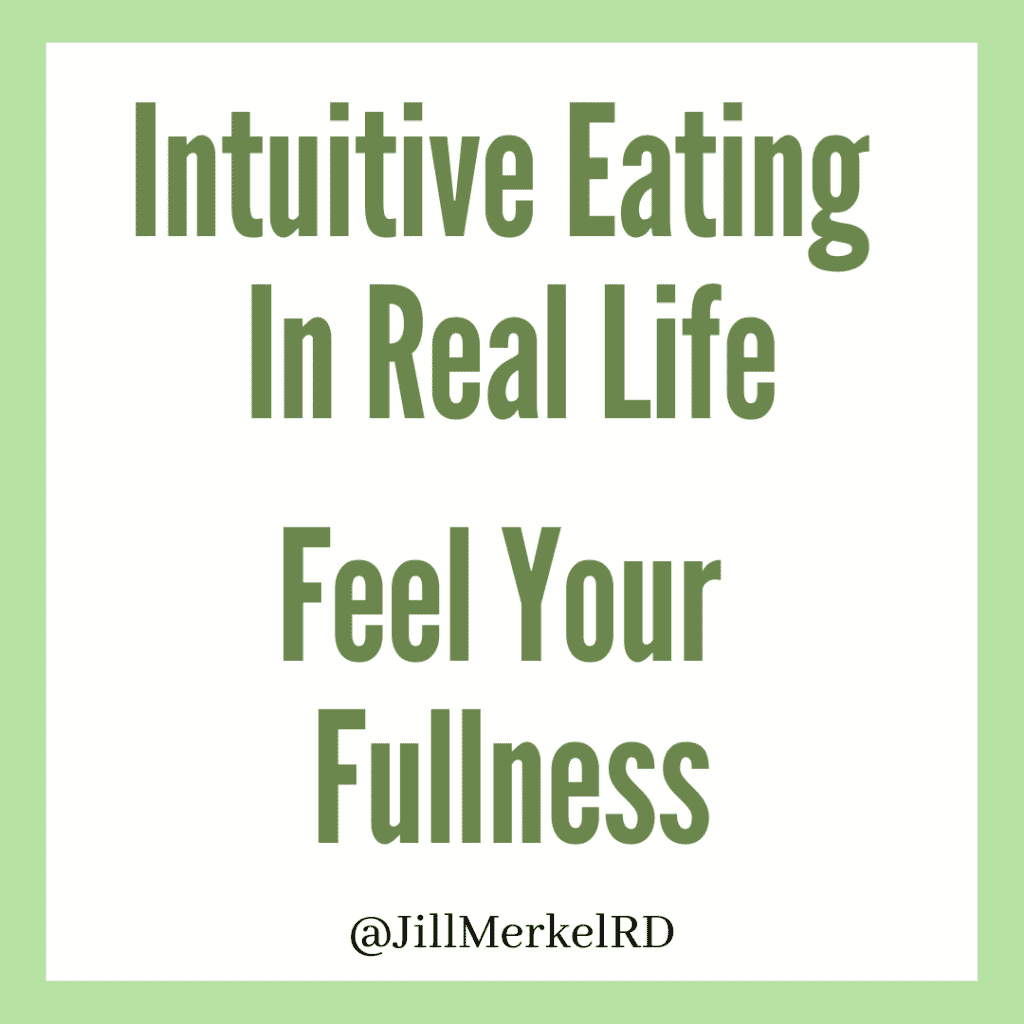Today we continue our Intuitive Eating in Real Life (IRL) series. Today we are talking about Intuitive Eating In Real Life Principle 5 Feel Your Fullness.
In case you missed it:
- What is Intuitive Eating?
- Intuitive Eating Principle 1: Reject the Diet Mentality
- Intuitive Eating in Real Life: Principle 1
- Intuitive Eating Principle 2: Honor Your Hunger
- Intuitive Eating in Real Life: Principle 2
- Intuitive Eating Principle 3: Make Peace with Food
- Intuitive Eating in Real Life: Principle 3
- Intuitive Eating Principle 4: Challenge the Food Police
- Intuitive Eating in Real Life: Principle 4
- Intuitive Eating Principle 5: Feel Your Fullness
Intuitive Eating Principle 5 Feel Your Fullness
The snapshot of Intuitive Eating Principle 5 is: “Listen to the body signals that tell you that you are no longer hungry. Observe the signs that show that you’re comfortably full. Pause in the middle of eating and ask yourself how the food tastes, and what your current hunger level is.”
Intuitive Eating In Real Life Principle 5 Feel Your Fullness
The Fullness Factors starting on page 174 of the Intuitive Eating 4th edition book are important to keep in mind. I see this often with nutrition clients of mine, they feel surprised/disappointed/frustrated that they are hungry again after X amount of time. That is completely normal! A meal is intended to keep you feeling full for anywhere from 3-6 hours depending on its size, what it consisted of, and to what point of fullness you ate to.
The Foods with Staying Power on page 176 of the Intuitive Eating 4th edition book gives some good examples of the difference between filling and satisfying. Typically, having some carbohydrates and some fat with a meal or snack provide more of a satisfying experience. For example, if you had a grilled chicken breast (protein) and some broccoli (veg), you might be reasonably full but not satisfied. Versus if you had the chicken, broccoli, AND a baked potato (carb) with butter (fat), you might be both full and satisfied.
Have you ever experienced this maybe in a previous dieting experience? I often think of the low-fat/low-calorie snack packs that were (are?) popular among dieters. You eat them because they are “allowed” or “guilt-free” but they are not very satisfying and you often end up eating all of them or eating more than you would if you had just allowed yourself to have the “whole” food version of whatever you were craving.
What People Are Saying About Intuitive Eating
Here is what some people in my online Intuitive Eating Focus Group are saying about Intuitive Eating Principle 5 Feel Your Fullness:
“This really resonates with me as I have eaten salad and very little protein with no carbs or fats thinking it was the “right way” to eat and wonder how I could be hungry two hours later.”
“I find that thinking about fullness helps me consider more well-rounded meals because I’m focused on what will help me feel full. Satisfied is getting easier to recognize since I have started IE and am now actively assessing how full I am and taking a time out if I’m not sure if I’m full/satisfied. It’s amazing how much more I was eating while distracted without realizing it.
What’s even more surprising is how little attention I paid to the taste of the food while eating. It was almost automated and I wasn’t paying attention until I realized how much I had eaten and then felt guilt/shame so would eat more when that rebellious “what the hell” thought came up in response. I wasn’t paying attention to the taste & had never heard of the loss of taste as a way to determine if I was satisfied.”
“I never considered the difference between satisfying and filling but it is so true. If I avoid my cravings and instead fill up on low-calorie alternatives I often still end up eating whatever I craved. Then, I feel uncomfortably full…it would have been better if I just ate according to my cravings to begin with.”
Additional Thoughts on Intuitive Eating Principle 5
Remember, the Hunger/Fullness Scale images we looked at earlier? Were you able to identify where on the Hunger scale you felt most comfortable or it was most satisfying to eat? Now it’s time to think about the Fullness scale. At what point do you begin to slow down eating? At what point do you want to stop eating so as not to go past comfortable fullness? Do you know what it feels like to be comfortably full versus overly full?
How would you describe comfortable fullness in YOUR body? What signs do you look for? What do you notice about how you feel about the food – how it looks, smells, tastes, etc. when you are at a certain level of fullness?

Eating while NOT distracted can make such a difference in your eating experience and being able to detect your body’s fullness level. They have done studies where people eat more while distracted but they also absorb less of the nutrients and don’t enjoy the food as much.
Mindlessly eating is very common and a big reason why people overeat and don’t trust themselves around food. Paying more attention to the act of eating and the experience of it can be really eye opening!
INTUITIVE EATING VIRTUAL SMALL GROUP COACHING
If you have been following along on this Intuitive Eating journey with me or hearing about Intuitive Eating elsewhere and wanting to learn more, or you’ve been doing some learning on your own and are ready to have the support of others on the journey with you, I have the perfect resource for you:
An 8-week small group coaching experience to help you heal your relationship with food and your body, ditch dieting for good, get back to trusting yourself around food AND enjoying the foods you actually like!
Group will be held live via online video >> Thursdays at 6:00pm CST (recordings will be sent out if you are unable to attend live). The group opens and runs once per quarter. FULL DETAILS HERE.
REMINDER
This blog and Instagram series I am doing is not meant to be a replacement for reading the Intuitive Eating book or working through the Intuitive Eating Workbook. Rather it’s to provide an overview of the Intuitive Eating concept and principles to bring more awareness to the fact that there is an alternative to dieting and restricting.
As always, if you need additional guidance and support via individual nutrition coaching or counseling, please reach out or join the waitlist to be notified when my Intuitive Eating group coaching is open for enrollment.


